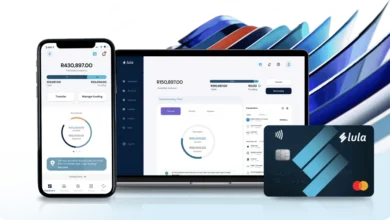Business
10 Ways South African SMEs Can Innovate with Limited Resources

Innovating with limited resources is a challenge many small and medium-sized enterprises (SMEs) face, especially in South Africa, where economic and market conditions can be unpredictable. However, innovation doesn’t always require large budgets. Here are ten strategies South African SMEs can use to innovate despite resource constraints:
1. Leverage Technology
- Utilize Free and Low-Cost Tools: Embrace digital tools and platforms that offer free or affordable versions. These can include project management software, online marketing tools, and customer relationship management (CRM) systems.
- Adopt Cloud Solutions: Cloud computing offers scalability and cost-efficiency, enabling SMEs to access powerful tools without investing in expensive infrastructure.
2. Embrace a Lean Mindset
- Focus on MVPs: Develop minimum viable products (MVPs) to test ideas quickly and cost-effectively. This approach helps identify viable innovations without extensive resource commitments.
- Iterate Based on Feedback: Use customer feedback to make improvements, ensuring that products and services meet market needs without unnecessary expenditures.
3. Collaborate and Network
- Form Strategic Partnerships: Collaborate with other businesses, suppliers, or organizations to share resources and knowledge. Partnerships can open new markets and offer access to new technologies.
- Join Industry Networks: Engage with industry associations and networks to gain insights, share best practices, and discover potential collaboration opportunities.
4. Tap into Local Talent
- Utilize Internships and Volunteers: Partner with universities and training programs to offer internships. This provides valuable experience for students while infusing fresh ideas into the business.
- Engage Freelancers and Consultants: Hire freelancers or consultants for specific projects, allowing access to specialized skills without long-term commitments.
5. Enhance Customer Engagement
- Leverage Social Media: Use social media platforms to engage directly with customers. These channels provide affordable ways to market products, gather feedback, and build brand loyalty.
- Implement Loyalty Programs: Develop loyalty programs to retain customers and encourage repeat business, which can lead to increased revenue without significant marketing costs.
6. Optimize Operations
- Streamline Processes: Identify and eliminate inefficiencies in operations to reduce costs and improve productivity. Techniques like lean manufacturing and just-in-time inventory can be valuable.
- Automate Repetitive Tasks: Use automation tools to handle routine tasks, freeing up staff to focus on higher-value activities.
7. Focus on Niche Markets
- Identify and Target Niche Markets: Concentrate efforts on underserved or specialized markets. This can reduce competition and allow for tailored solutions that meet specific customer needs.
- Offer Unique Value Propositions: Differentiate products and services by offering unique features or exceptional customer service that competitors do not provide.
8. Innovate Business Models
- Explore Alternative Revenue Streams: Consider new business models, such as subscription services or bundling products, to diversify income sources.
- Adopt a Circular Economy Approach: Implement practices that focus on sustainability and waste reduction, such as refurbishing or recycling products, to appeal to environmentally conscious consumers.
9. Harness Data Analytics
- Use Data to Drive Decisions: Implement data analytics to understand customer behavior, market trends, and operational efficiency. Insights gained can guide strategic decisions and innovation efforts.
- Track Key Performance Indicators (KPIs): Regularly monitor KPIs to identify areas for improvement and measure the impact of innovation initiatives.
10. Foster a Culture of Innovation
- Encourage Employee Input: Create an environment where employees feel empowered to share ideas and suggest improvements. Regular brainstorming sessions can uncover innovative solutions.
- Reward Creativity and Initiative: Recognize and reward employees who contribute innovative ideas or demonstrate creative problem-solving.
South African SMEs can overcome resource limitations by adopting creative and strategic approaches to innovation. By leveraging technology, optimizing operations, and fostering a culture of innovation, these businesses can remain competitive and responsive to market demands. Embracing these strategies not only drives growth but also builds resilience in an ever-changing business landscape.




